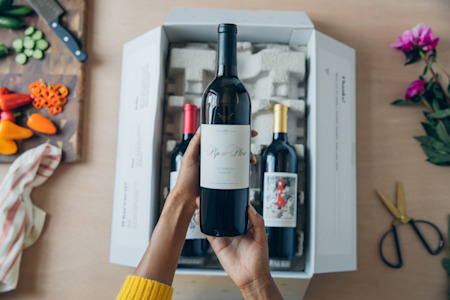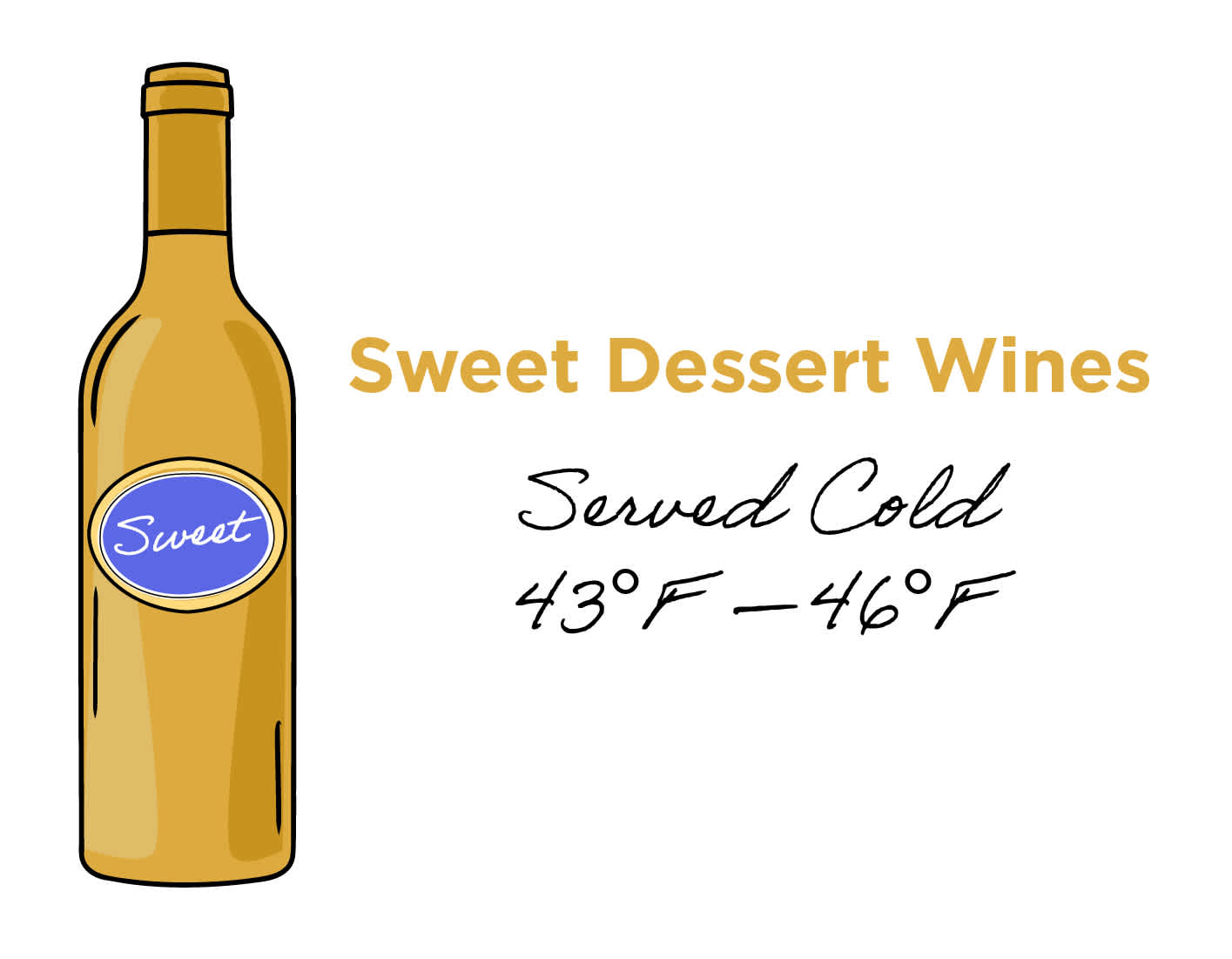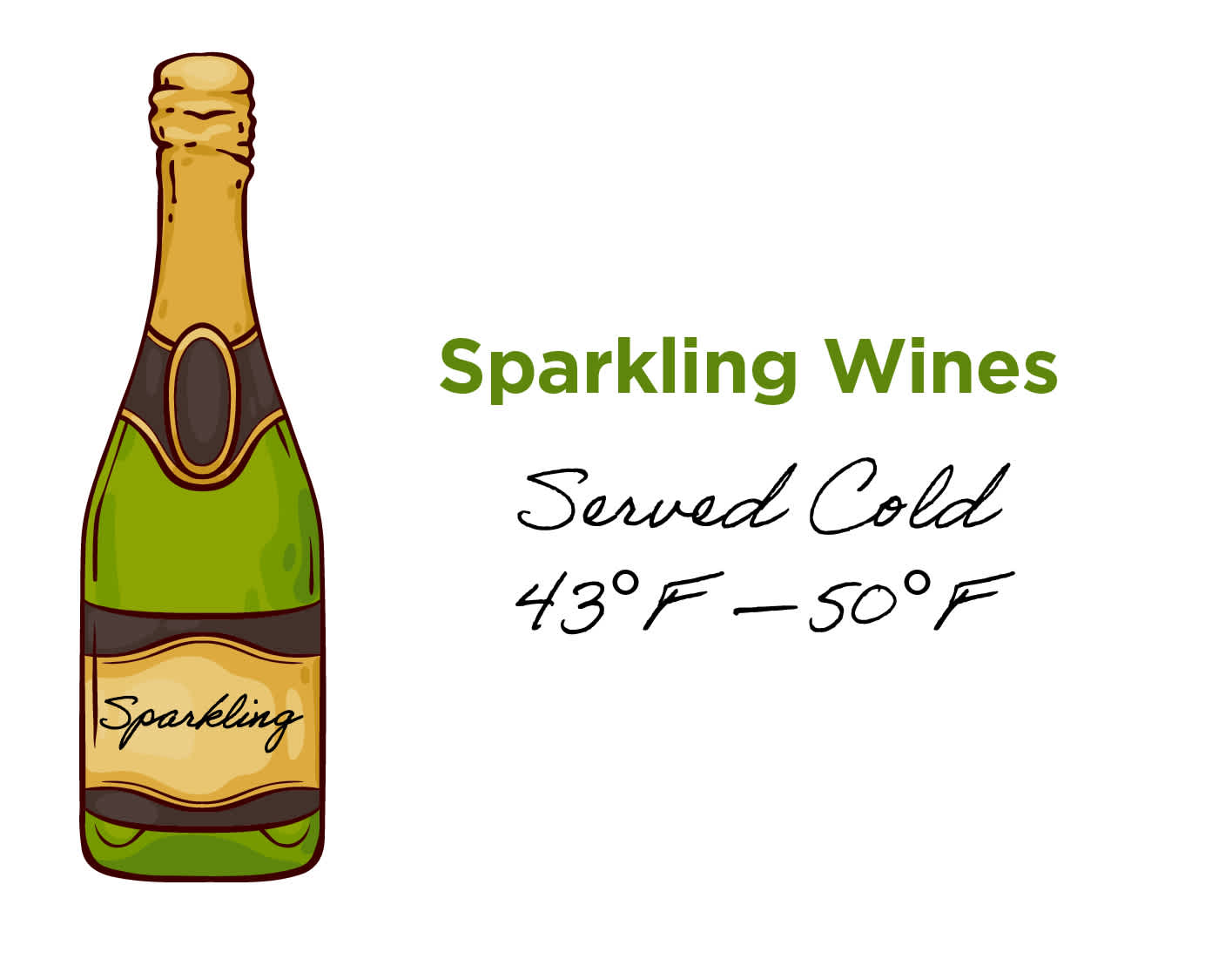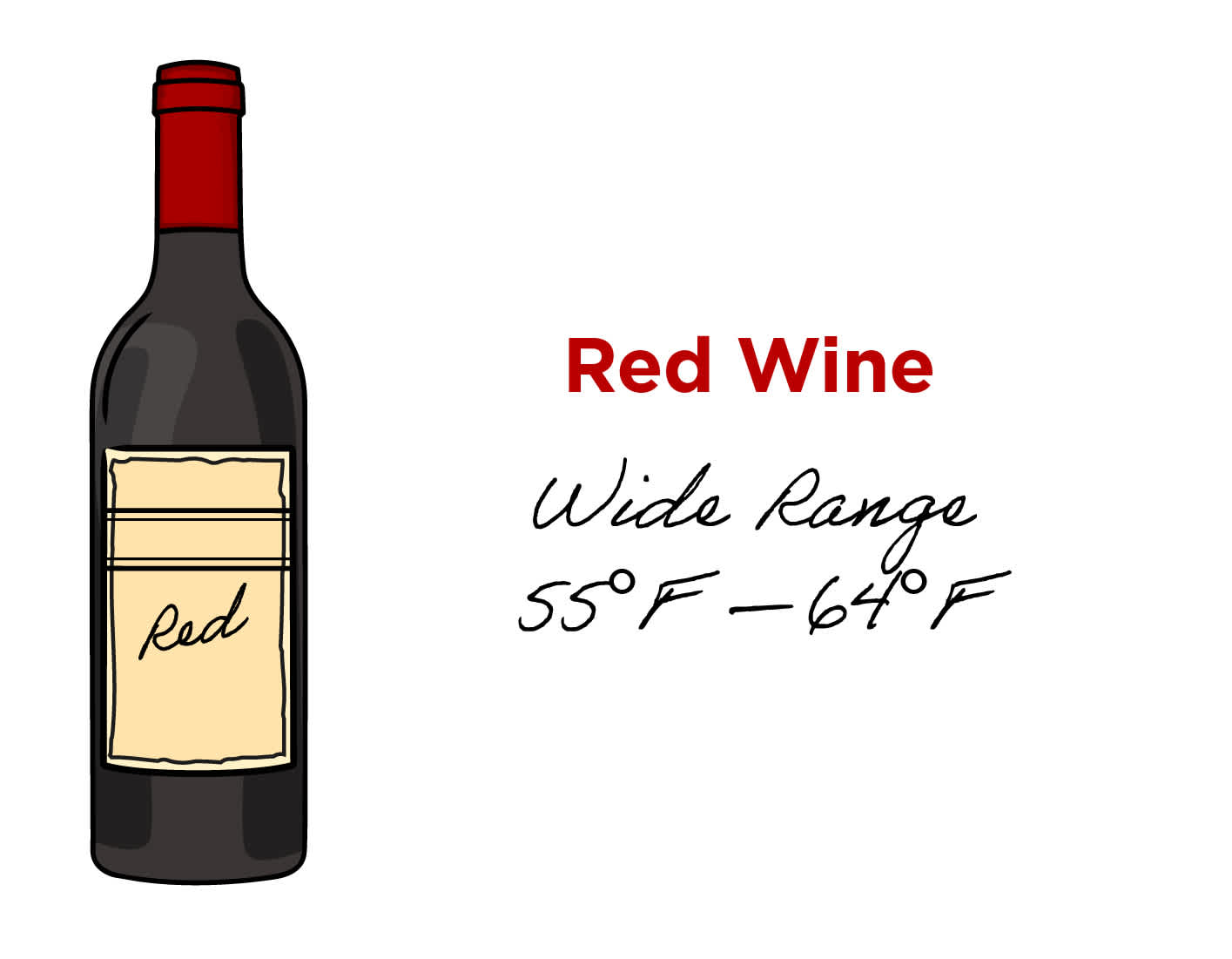The Best Serving Temperature for Every Type of Wine
Rules for serving wine and tips to quickly chill your bottles
In every part of the winemaking process temperature is essential, but for those about to enjoy a new bottle, knowing the correct serving temperature can enhance your drinking experience.
A typical "rule" that many new wine drinkers hold is that reds should never be chilled and are always served at room temperature, but that's not actually a rule you should stick to! The optimal temperature of wine varies, and that includes red wines. Similarly "room temperature" is lower than most people think.
In this guide, we will outline why temperature is important for wine, how storing your wine at the right temperature can affect aging and the ideal temperature for serving the major types of wine.

Take Our Quiz Today
Get award-winning delicious wines from all over the world shipped straight to your door. Take the quiz to get the perfect pairings for your holiday season.
Take The Quiz TodayIN THIS ARTICLE:
Want personalized wines?
Get your first box of wines for $44.95 + free shipping.

Quick Cooling Tips
Do you just need to learn about how to quickly chill your wine? We have a few tips to start out:
Put most white wines in the refrigerator a few hours before serving, and remove the bottle fifteen minutes before you want to open it. Red wines should be put in the refrigerator a half-hour before serving to cool them down to the ideal "room temperature"
Like we said above, room temperature for wine is closer to 60°F. It is generally agreed that wine is best preserved when stored 50°F-59°F, and room temperature typically comes out to be just above that. If you are concerned about serving wine too cold, don't be! Wine will warm as you drink it as long as the ambient temperature around you is warmer than the wine. If you are drinking wine outside in the winter it's possible you'll need to warm your wine up!
Don't have time to let your wine cool in the refrigerator?
The quickest way to chill wine is also an old Sommelier trick. You'll need an ice bucket, ice cubes, water, and a bit of salt.
Place the wine bottle in the bucket, add salt to the bucket, surround the bottle with ice cubes, and fill the rest with water. The salt actually lowers the freezing point of water, and the water surrounds all surfaces of the bottle and chills it faster. Usually, around 30 mins will do for a bottle of white or sparkling wine.
Don't have the supplies for a makeshift ice bucket?
One easy trick is to wet a paper towel, wrap the bottle, and then place it in the freezer. Be careful with this method though, if the wine gets too cold it could freeze and push out the cork or break the glass bottle.
Storing Wine
Storing wine at the proper temperatures will make serving much easier. The ideal wine cellar temperature for wine storage is between 50-59° Fahrenheit. Storage temperature will have an effect on the rate at which your wines age. The warmer the conditions, the more quickly the wine will mature.
To learn more about storing wines visit our article on storing your wine here.
Temperature and Wine
Temperature can have a dramatic effect on how wine tastes. Wine that is served warm (between 59-64°F) will highlight the aromas, accentuate sweetness, mask tannins or astringency, and vastly increase the bubbles in sparkling wine. Depending on the type of wine you have, there are optimal temperatures that will highlight the best aspects and mask the negatives.
Even wine glasses can have an effect on your wine serving temperature. A stemless glass will warm your wine more quickly due to the contact of your hand and body temperature on the bowl of the glass.
The W.S.E.T (Wine and Spirits Education Trust - one of the most reputed organizations in the wine world) has a fantastic breakdown for the best temperature to serve your wines.
Sweet dessert wines should be served (well chilled) between 43°F and 46°F
Sparkling wines should be served (well chilled) between 43°F and 50°F
Light & medium-bodied whites should be served (chilled) between 45°F and 50°F
Medium & full-bodied oaked whites should be served (lightly chilled) between 50°F and 55°F
Light-bodied reds should be served (lightly chilled) between 55°F and 59°F
Medium/full-bodied reds should be served (room temperature) between 59°F and 64°F
But, it can be enjoyable to taste wine as it changes in the glass, so letting it get a little colder than it should and warming up can be a fun exercise for a wine like a Bordeaux or a Chianti.
Not sure what you have? Look below to check out our guide.
Sweet Dessert Wines
On the coldest end of the serving spectrum (between 43°F and 46°F) we have dessert wines. This includes botrytized (late harvest grapes that have been concentrated by noble rot) wines like Sauternes and Trockenbeerauslese Rieslings as well as other sweet wines. If you want to learn more about sweet wines in general, check out our guide to Sauternes.
As mentioned earlier, cool temperatures suppress the taste perception of sugar. When drinking a glass of sweet wine, this means that you can more readily taste the other complex flavors hiding behind sweetness without losing the texture.
Sparkling Wines
Sparkling wines should be served cold somewhere between 43°F and 50°F. The cooler temperature temper the bubbles that can get out of hand when warm. Wine critic Jancis Robinson describes warm (64°F) sparkling wine as "unpleasantly frothy" in The Oxford Companion to Wine. That is a pretty apt and unappealing description.
Sparkling wines included in this recommendation are Champagne, Cava, Prosecco, Pétillant Naturel (Pet Nats), other sparkling whites, and even sparkling reds like Lambrusco from Italy and Shiraz from Australia.
White Wine
White wines have a general range and should be served colder than reds. Crisp, lighter-bodied, or unoaked white wines like a Pinot Grigio, Viognier, or a Sauvignon Blanc should be served between 45°F and 50°F. More full-bodied or oaky whites like some Chardonnay should be served between 50°F and 55°F.
Riesling should be taken on a case by case basis, as there are many different styles. Consult our guide for Riesling for more information.
Red Wine
Red wine varietals have a bit more breadth with regards to appropriate serving temperatures. And as we mentioned before, it can be enjoyable to slowly taste wine as it warms in the glass.
Light reds like Beaujolais or some Pinot Noir from Burgundy or Oregon do well with a light chill, between 55°F and 59°F.
Bigger reds, like most Zinfandels, Merlots, Syrahs/Shiraz, Cabernet Sauvignon, and Malbecs will do well best at just under what we think of as "room temperature" (between 59°F and 64°F). For wine, the ideal room temperature is a draft Chateau with stone floors that stays chilly year-round.
IN THIS ARTICLE
Want personalized wines?
Get your first box of wines for $44.95 + free shipping.


WinePrint™ by Firstleaf
Are you looking to learn more about your wine preferences? Check out our Wine Print for an in-depth look at your personal tasting profile. Discover your favorite wines, varietals, regions, and tasting notes and get personalized recommendations wherever you are.
Learn More



